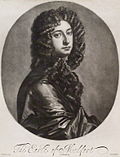The secretary of state was one of the senior ministers of the Jacobite court in exile following the Glorious Revolution of 1688.
Contents
In common with Jacobite attempts to create a shadow court in exile that matched that in London, the role was based on the British position of secretary of state. In London, the role had been split into two: Northern Secretary and Southern Secretary. At the Jacobite court in exile, first in Paris and then in Rome, the claimants alternated between having one or two secretaries of state. From 1689 to 1759 a series of unsuccessful attempts were made to invade Britain which would have restored the secretaries' effective power.












